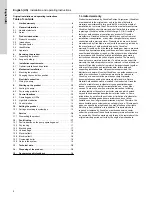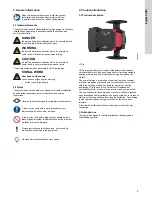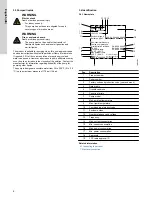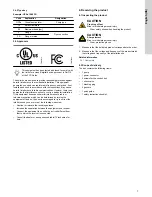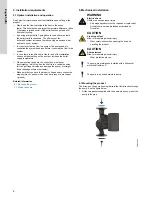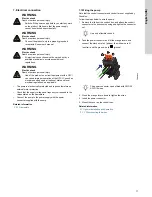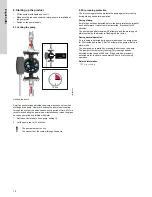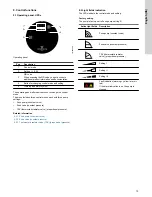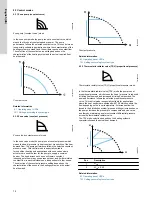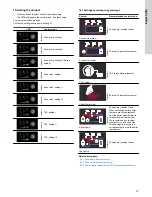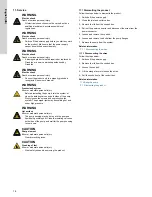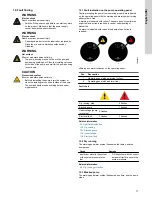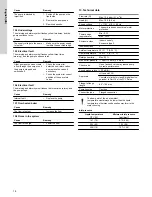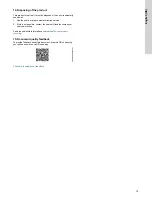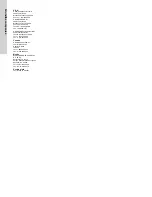
9.3 Control modes
9.3.1 Zone pump (constant curve)
TM082496
Zone pump (constant curve) mode
In the zone pump mode the pump runs at a constant curve, which
means that it runs at constant speed or power. The pump
performance follows the selected constant curve. This control mode
is especially suitable in applications where the characteristics of the
heating system are steady and the emitters require a constant flow.
The selection of the constant-curve setting depends on the
characteristics of the heating system and the actual required flow/
heat demand.
TM071005
Constant curve
Related information
9.1 Operating panel, UPSe
10.1 Settings according to system type
9.3.2 Zone valve (constant pressure)
TM082497
Zone valve (constant pressure) mode
In the zone valve mode the pump runs at constant pressure which
means the head (pressure) is kept constant, irrespective of the heat
demand/flow. The pump performance follows the selected constant-
pressure curve. This control mode is especially suitable
for underfloor heating and applications with zone valves where
actuators are used in order for the pump to supply a common
header. The head across each zone will remain constant
independent of how many zones request heat, and it will maintain a
constant flow in each individual zone, independent of other zones.
The selection of the constant-pressure setting depends on the
characteristics of the zones in the heating system and the actual
heat demand.
H
Q
TM071004
Constant pressure
Related information
9.1 Operating panel, UPSe
10.1 Settings according to system type
9.3.3 Thermostatic radiator valve (TRV) (proportional pressure)
TM082498
Thermostatic radiator valve (TRV) (proportional pressure) mode
In the thermostatic radiator valve (TRV) mode the pump runs at
proportional pressure, which means the head (pressure) is reduced
at falling heat demand and increased at rising heat demand. The
pump performance follows the selected proportional-pressure
curve. This control mode is especially suitable for applications
where the heat emitters are equipped with TRV which controls the
flow depending on the room temperature. At increased flow the
losses in the distribution system (pipes and fittings) increase hence
the pumps increase the pressure to compensate and vice versa,
and thereby maintaining an almost constant differential pressure
across the thermostatic radiator valve.
The TRV mode selection depends on the heating system's
characteristics and the actual heat demand.
H
Q
1
2
TM071003
Pos.
Description
1
H
set
2
H
set
x 0.40
Related information
9.1 Operating panel, UPSe
10.1 Settings according to system type
14
English (US)




